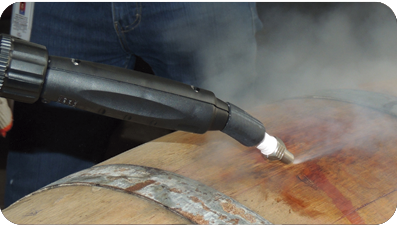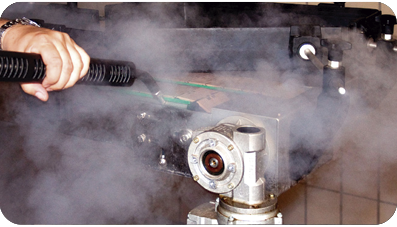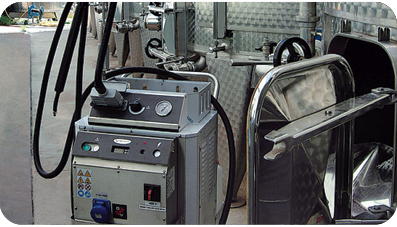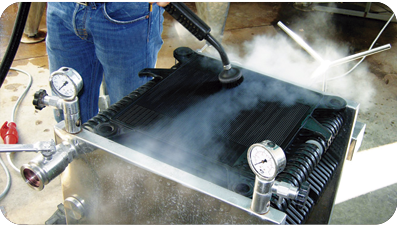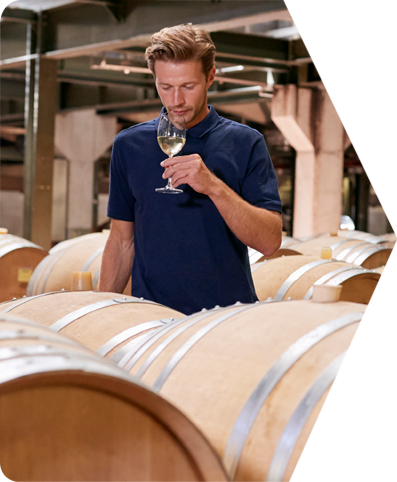
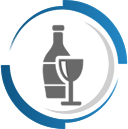
Wine Industry
Steel tanks, filtration systems, bottling machines, surface filling machines, oak barrels, barrels, and mono blocks.
Examples of application:
• Machines for cleaning and disinfecting wine and oil cellars.
• Regeneration in barrels.
• Elimination of deposits.
• Disinfection of steel tanks.
• Disinfection of filters.
• Cleaning of windows, toilets, and floors.
• Elimination of mold, bacteria and parasites leaving a neutral pH on the treated surfaces.
• Cleaning of decanting pipes, accessories, machines, polished chrome surfaces.
Steel surfaces are cleaned optimally and with less effort thanks to the action of steam. The inside of the wine barrels is difficult to reach and clean. With a suitable steam jet system it is possible to efficiently eliminate all types of residues of chemical agents, bacteria and deposits. Steam disinfects each slot covered by microbes and all kinds of dirt that any other traditional cleaning method can reach and eliminate. At the end of the treatment, the surfaces are completely disinfect with any deposit of chemical agents.
In addition to the cleaning of barrels, a cellar has other areas and types of equipment that only steam is able to clean and disinfect efficiently. Among others, these include pipes, flanges, and faucets.
The traditional cleaning methods involve a high consumption of water.
In the process of making a bottle of wine (0.75 l), about 1.5/2 liters of washing water is used. In a medium-sized cellar, 70,000 bottles produced are equivalent to 140,000 liters of water. For example, to clean a barrel you need about 350 liters of water, to clean a tank about 700 liters (depending on the size) and to bottle 500 liters.
Steam is the eco-sustainable solution.
• Cleaning and regeneration of barrels.
• Cleaning and sanitization of steel tanks.
• Cleaning and disinfection of bottling lines.
• Sanitation of filters.
• Cleaning and disinfection of accessories, pipes, and equipment.
• Cleaning and regenaration of barrels.
Barrels represent the largest investment of a winery. For this reason, all wine producers pay close attention and care. The half-life of a barrel is 3 years; a time that, thanks to steam, can be extended for many years: this is because the steam, by penetration the porosity of the wood, is able to eliminate not only bacteria and nested yeasts, but also the residues of the old wine that has absorbed the wood. The woof of the barrel recovers its natural ability to micro-oxygenate the wine in the refining phase and allows to optimize the polymerization process of tannins and anthocynanins. A wooden wine container that has a significant amount of tartrates has a very limited capacity of oxygen exchange with wine because the porosity of the wood is totally blocked.
Steam treatment, following a precise protocol, returns to the barrels their function of micro oxygenation along with a contact of the wine with the still active wooden parts even after many years of use. There are many structure and full-bodied wines that prefer to rest in barrels due to their refinement with a less marked transfer of the properties of wood and the use of regenerated barrels is undoubtedly strategic.
In a warehouse of barrels of 1000 pieces, postponing the purchase of a new year (250 pieces per year) can mean an economic saving of about 150,000 euros.
Solutions for:
• Brettanomiches, saccaromycetes, yeasts, spores.
• Molds.
• Sechino (dry barrel).
• Various yeasts and bacteria.
Benefits:
• Economical to extend the life of the container.
• Brushing of the barrel not necessary.
• Less consumption of chemicals by up to 90%.
• Water saving >50 l steam vs 350 l traditional washing operator safety.
• Cleaning process.
• Guarantee of a sterile environment.
Cleaning and sanitization of steel tanks in size. Steam is an excellent solution to combine cleaning and disinfection operations in a single step. A high-performance stream generator is required, which can be modulated according to the capacity of the tank.
Solutions for:
• Brettanomyces, saccaromycetes, yeasts, spores.
• Consumption of water and chemicals.
• Labor savings.
Benefits:
• Lower consumption of chemical product.
• Water saving > 150 l steam vs 600 l traditional washing operator safety.
• Cleaning process.
• Less wastewater.
• Guarantee of a sterile environment.
Cleaning and disinfection of bottling lines.
Cleaning and disinfection of bottling lines: Bottling lines are among the most prolific places for microorganisms that can alter the organoleptic characteristics of the wine and, at the same time, are the most difficult to reach during the standard cleaning process. Steam is capable of sanitizing every corner thanks to the termal shock, completely eliminating the use of chemicals and minimizing cleaning times. The steam cleaning of a bottling line, with a filler of 42 nozzles, lasts a maximum of 1 hour without the need to disassemble any components, including the ducts and filters of the housing up to 0.45 microns.
Solutions for:
• Bacteria.
• Consumption of water and chemicals.
• Saving labor washing times.
Benefits:
• Automation of operator safety processes.
• Less wastewater.
• Reduction of the consumption of chemical products.
Sanitation of filters.
The filtration of wine is a fundamental step, since it can affect the organoleptic properties and colloidal and microbiological stability. The correct cleaning of the filters is therefore essential for the production of a good wine.
To date, there are no standard methods of cleaning, however, some manufacturers promote steam cleaning and sanitization with a process of about 20 minutes.
Cleaning and disinfection of accessories, pipes, and equipment.
Dry steam technology is excellent for cleaning and disinfecting decanting ducts, accessories, elbows, nozzles, filters, cars, hoppers, crushers, destemming machines, pumps, motors, tubs, presses, drains, walls and floors and for all other work environments.
